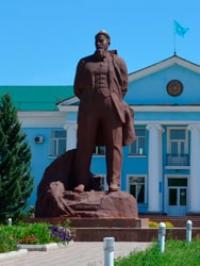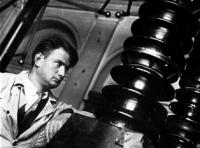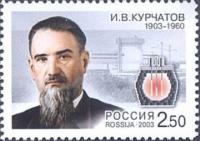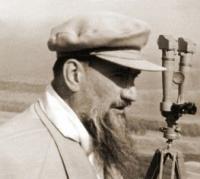You are here
Monument I.V. Kurchatov in the town of Kurchatov.




Excursion tour Semipalatinsk nuclear test site.
“I am happy that I was born in Russia and devoted my life to the atomic science of the great Land of Soviets.”
“Do only the most important thing in your work, in life.”
I.V. Kurchatov
Photo tour to the Semipalatinsk nuclear test site.
A monument to the academician, nuclear physicist Igor Vasilievich Kurchatov was erected against the background of the Central Headquarters of the Semipalatinsk test site (now the city akimat building) in 1991. After the city was named after I.V. Kurchatov in 1974, a majestic monument to the great scientist was erected from red granite.
Igor Vasilievich Kurchatov (1903 - 1960) The life and work of Igor Vasilievich Kurchatov is one of the brightest pages in the history of Russian science of the 20th century. A talented experimental physicist has an outstanding role in the development of scientific and technical problems of mastering nuclear energy.
The scale of his personality was formed in the special geographical coordinates of Russia: from the Urals to Tauris. Kurchatov’s “small homeland” was not only the Simsky Plant, lost in the Ural mountains, where he was born, but also Crimea, the land where he grew up, mastered the “universities of life”, his path to science began and his personal defense line passed.
In 1941 in Sevastopol, he created a reliable system for protecting the Soviet fleet from magnetic mines. Igor Kurchatov did not immediately come to the work of his whole life - to pursuing science. Having graduated from the university early in 1923, Kurchatov moved to Petrograd, learned to build ships, worked at the Pavlovsk Observatory, studied the mysterious sea oscillations in Feodosia, and taught in Baku. In 1925 he joined the Leningrad Institute of Physics and Technology (LFTI), the country's best physical center.
The young scientist was formed in an atmosphere of scientific enthusiasm, worked on first-class equipment, studied the physics of dielectrics, the electrical properties of crystals, and was engaged in the creation of new insulating materials. His work in these years opened up a new field of physics - ferroelectricity.
In 1932, Kurchatov dramatically changed the direction of his scientific work and took up nuclear physics, traveled extensively around the country, organized conferences, created new physical centers, and was engaged in the construction of a cyclotron at the Leningrad Physicotechnical Institute.
In 1940, spontaneous fission of uranium was discovered in Kurchatov’s laboratory, but the war stopped this work. In the forties, Igor Kurchatov headed the Soviet atomic project, under his leadership, the first experimental nuclear reactor F-1 was assembled in Europe and Asia, and a plant for the production of plutonium from uranium irradiated at the industrial reactor “A” was launched. At 39, he was the supervisor of the Secret Laboratory No. 2 and the Atomic Project.
In the most difficult conditions of the war, Kurchatov created the perfect scientific system, which solved the military task of creating nuclear weapons in the shortest possible time, became the ancestor of the explosive development of many unique technologies, scientific areas that make up our pride to this day.
Ensuring the country's security in one of the most dramatic periods of our history, achieving nuclear parity with the United States, which prevented the unleashing of a world nuclear conflict - all this became the main business of his life.
However, the goal and ideals of Igor Vasilievich always remained peaceful. “I deeply believe and firmly know,” he said, “that our people, our government, will only be given the good of humanity to the achievements of this science.”
Under his leadership, the world's first industrial nuclear power plant (Obninsk NPP, 1954), the world's first nuclear reactor for submarines and nuclear icebreakers (Nuclear-powered icebreaker Lenin, 1959), the world's first research facility for controlled fusion research were created (1958) - since that time, the Russian name of the most complex scientific installation Tokamak forever entered the world scientific lexicon. The merits of the scientist are highly appreciated by the Soviet state. I.V. Kurchatov - three times Hero of Socialist Labor, laureate of the Lenin and four Stalin Prizes.
He was awarded five Orders of Lenin and two Orders of the Red Banner of Labor, medals "For Victory over Germany", "For the Defense of Sevastopol", and was awarded the Great Gold Medal to them. M.V. Lomonosov Gold Medal. L. Euler of the Academy of Sciences of the USSR.
Today, the achievements of nuclear physics are indispensable for energy, medicine, archeology, the food industry, security systems (for example, inspection machines at the airport or metro), as well as production spacecraft, new materials, and many other other areas of the development of science and technology, in which a “peaceful atom” is indispensable.
Authority:
https://cekport.ru/airport/kurchatov/ Alexander Petrov. http://kurchatov.vko.gov.kz/kz/city2.htm







